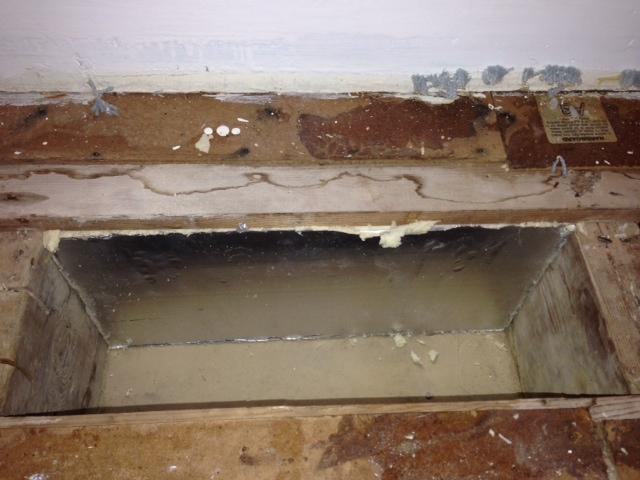Hi there,
I have a 1930s semi-detached house which i recently purchased. I have discovered that there is a draft in the 1st floor/ground floor ceiling void which can make the floor cold and also draft up into the rooms from the skirting.
This house has solid brick work so is not the drafts from where the joists go into the inner leaf (like a house with cavity walls would).
The house has 2 single story extensions on ground floor and a small bay window with a roof. no doubt there is a draft from one of these entrances...
I want to close off all drafts by doing the following:
1. Pull back the carpet at all external walls upstairs and lift 1 or 2 floor boards.
2. Seal with silicone or expanding foam any locations i can see gaps in the brick work like cables etc that will run into the roof of the single story extensions.
3. Cut 50mm Celotex board to size and butt it between the joists so that it creates a "plug" betwean the ground floor ceiling and the 1st floor floorbard closest to the wall.
4. Seal around this celotex board to close any small gaps.
5. Lay hardboard on top and caulk the bottom of the skirting to it to create a seal.
My only worry about doing this is ventilation to the 1st floor joists. as this will block all air circulation to the very ends of the joists i worry that this could potentially rot them over the years and thus cause huge damage.
Any advise on this would be most appreciated as the drafts are rather annoying and not letting the rooms upstairs efficiently hold the heat for as long as they should.
thanks,
Mike
I have a 1930s semi-detached house which i recently purchased. I have discovered that there is a draft in the 1st floor/ground floor ceiling void which can make the floor cold and also draft up into the rooms from the skirting.
This house has solid brick work so is not the drafts from where the joists go into the inner leaf (like a house with cavity walls would).
The house has 2 single story extensions on ground floor and a small bay window with a roof. no doubt there is a draft from one of these entrances...
I want to close off all drafts by doing the following:
1. Pull back the carpet at all external walls upstairs and lift 1 or 2 floor boards.
2. Seal with silicone or expanding foam any locations i can see gaps in the brick work like cables etc that will run into the roof of the single story extensions.
3. Cut 50mm Celotex board to size and butt it between the joists so that it creates a "plug" betwean the ground floor ceiling and the 1st floor floorbard closest to the wall.
4. Seal around this celotex board to close any small gaps.
5. Lay hardboard on top and caulk the bottom of the skirting to it to create a seal.
My only worry about doing this is ventilation to the 1st floor joists. as this will block all air circulation to the very ends of the joists i worry that this could potentially rot them over the years and thus cause huge damage.
Any advise on this would be most appreciated as the drafts are rather annoying and not letting the rooms upstairs efficiently hold the heat for as long as they should.
thanks,
Mike


